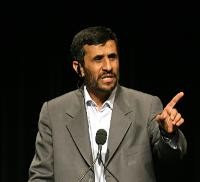On Friday, just over 46 million Iranians will go to the polls to elect the president of the Islamic Republic to a four-year term. Controversial hardline President Mahmoud Ahmadinejad is the candidate to beat, but he is facing a stiff challenge in an intriguing struggle that has taken shape in the last few weeks of the campaign. Reformist candidate Mir Hossein Mousavi has emerged as the main threat to the incumbent, while another reformist, Mehdi Karrubi, and another hardliner, Mohsen Rezai, are also in the race.
In Iran's unique constitutional system, severe vetting by the Islamic Republic's political elite determines which candidates are permitted to run, in both presidential and legislative elections. Nevertheless Iranian elections do have their surprises. In 1997, Mohammed Khatami trounced his hardliner opponent, Ali Akbar Nateq Nuri, despite Nuri being favored to win. In the second-round run-off of the 2005 election, the previously obscure Mahmoud Ahmadinejad shocked the regime stalwart and favorite, Akbar Hashemi Rafsanjani.
As polling day in Iran has approached, some analysts have been brave enough to venture that Moussavi might just make it over the line first, and Western media reports have claimed that even sections of the Revolutionary Guards have begun to desert Ahmadinejad. As there is no scientific polling in Iran, the result is impossible to predict. But what can be concluded on the eve of the poll is that no incumbent president in the history of the Islamic Republic has faced such a serious challenge from opposing candidates.

